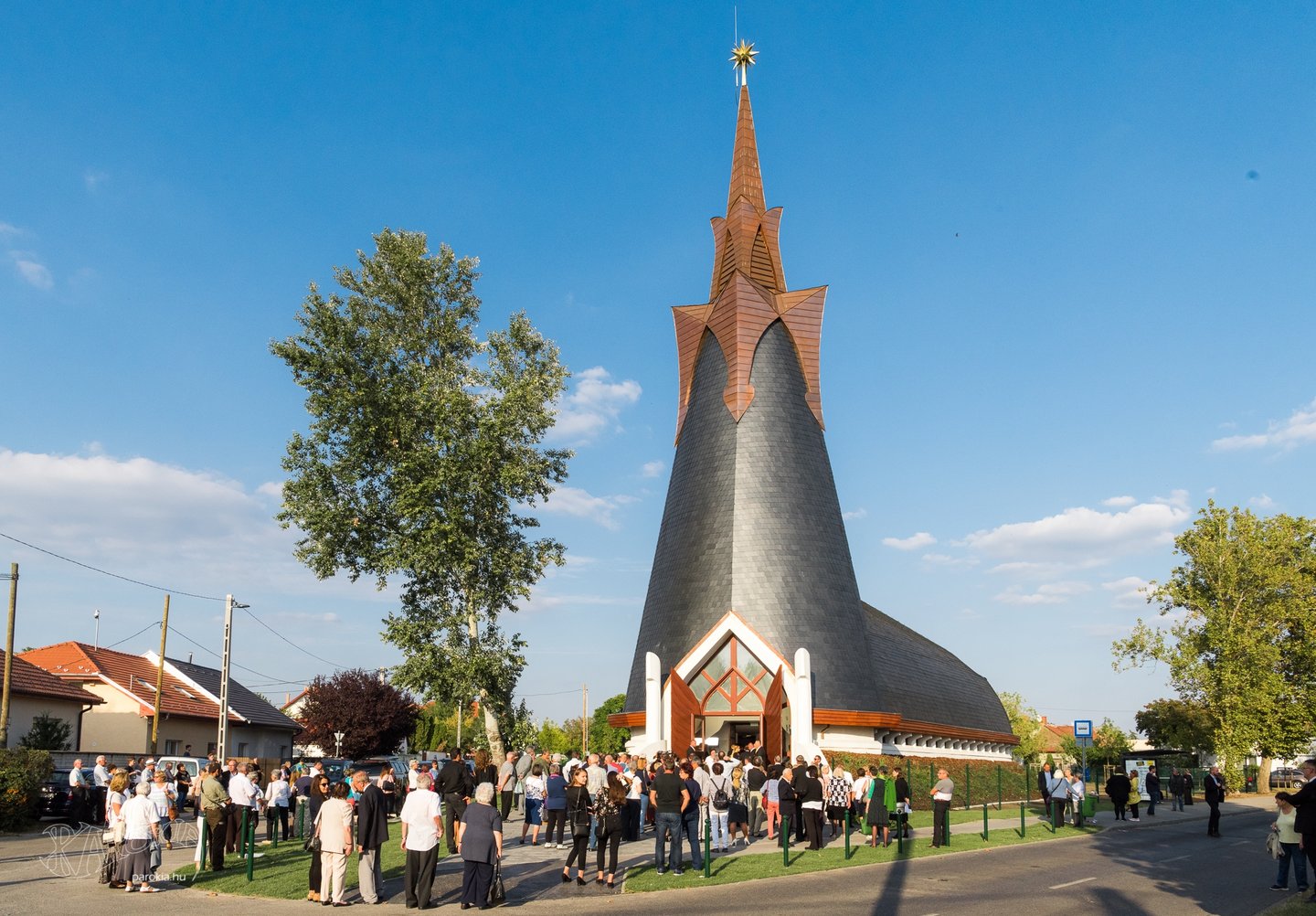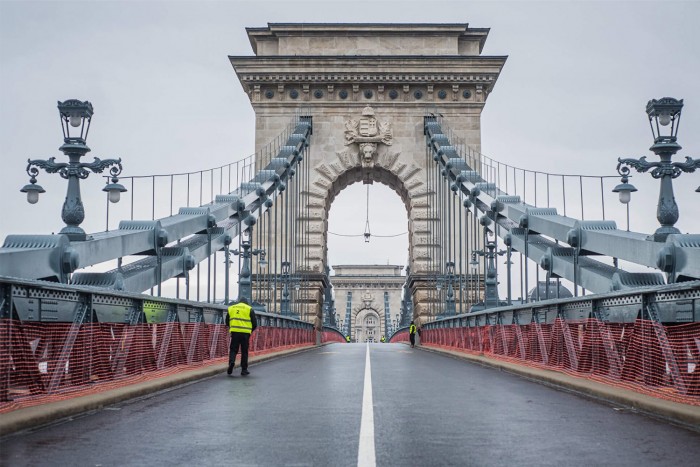The Church of Togetherness in Budapest – and what is behind it
On the Sunday behind us, the last church of Imre Makovecz, designed in his lifetime and bearing the unmistakable style of architecture, was solemnly consecrated in the Budapest-Pesterzsébet-Szabótelep Reformed Parish. He deservedly named it the Church of Togetherness. On the occasion worthy of the consecration, Prime Minister Viktor Orbán reminded in his speech that since 2010 150 churches have been built in the Carpathian Basin with the support of the government and 3,000 have been renovated. I would add: this is a historical achievement that evokes the church buildings of St. Stephen.
In his proclamation, Bishop Zoltán Balog, the pastoral president of the Reformed Synod, spoke about divine protection, the enveloping divine presence. Béla Kató, Bishop of Transylvania, also expressed the living reality of Hungarian and Reformed togetherness in his person and with a wish for blessing.Dr. Bagdy Emőke em. In memory of Pastor István Bagdy, who had previously served in the congregation, he offered a sum to build a new church. Fundraising efforts may have raised 90 million forints.
Informative, event-following coverage of all this can be read in the spread and content of Magyar Nemzet online, dated 26/09/2021 by Attila Ditzendy. I highly recommend writing to everyone, which is available here.
There is a sentence in the valuable article that prompted me to reflect on all that may lie in the spiritual background of the realization of this Makovecz church. As an experience of several generations of believers.
The sentence reads: “Their other house of prayer on Torockó Street was built of adobe between 1983 and 85”.
The metaphysics, physics, history of a church-building community
It belongs to the historical authenticity: the house of prayer on Torockó Street was not built of adobe, but of brick, glass and precious wood. Like the Makovecz church, the suburban church has its own history. Not just any. We must first speak of the “theology” of temple building according to the Book of Psalms: “If the Lord does not build the house, the builders will labor in vain” (Psalm 127: 1). The other: every church must first be built in the heart, then take shape in planning, then continue in prayer and giving, collecting.
About the design: In the heart of Solomon or in the heart of Ezra in the time of the returning Jews, there was a longing for heaven to build the temple. I was able to witness the fact that the congregation in Szabótelep decades earlier, the church building was not very beneficial.
A culture of togetherness flourished – Also on the outskirts of the city at the center of God’s love
At the time, between 1983 and 1985, hundreds of members of the growing small community, with some flaming faith presbyterians and awakening youth, dare to dare. Their motto became: Also on the outskirts of the city in the center of God’s love. As their pastor, I sought primarily the threads of togetherness towards Transylvania. Well-known writers and poets visited our then renovated Church on Martyrs’ Road beyond Királyhág. Lectures and testimonies were given. Kányádi, András Sütő, and others, and pastors from Transylvania, and then visitors from the congregation to Transylvania, gave each other the doorknob and the plans. And sectarian and national, native-language bridge construction began. Gathering experiences of fraternal togetherness. The wheels of the ecclesiastical supremacy of the time and the ÁEH crouched at the camels of the small congregation, the “Red Drip” community, which included many workers and their children. After several attempts, implement a green path to yellow the plan. For months, the singing of the psalms and praise resounded far and wide on the churchyard in the suburbs, reaching even to the hearts of those elsewhere or unbelievers.
Church building has become a real community-forming force. In many, a series of memories awoke then: I am also a Reformed. And they came to wake up. The realization of the miracle started out of self-strength, with extraordinary giving and personal work.
From Rostock to Vargyas, with Protestant and Jewish donations
The greatest community-forming experience was given to the youth. By the grace of the Lord of History, in 1981 we took our young people to Rostock in the GDR by plane. An experience of a lifetime, experiences that expand faith. It was a generational find of young people, with tongues spanning prayer, singing in the illegal youth camp. Our host was Joachim Gauck, a Lutheran pastor who later became President of Germany. On our second youth trip to Wartburg and Thuringia, we lived with the pastors of Jena, Weimar, Eisenach in 1982. We chanted English and German modern church songs together. And let’s see a miracle! When the construction started in Torockó, the young Germans came with their pastors voluntarily and singing to build a church in Budapest, on the outskirts of the city. Each of them wrote a name with a felt-tip pen on the brick he had milled into the wall of peace. Presbyter Mihály Harangi built the model of the realized church from matchsticks. With that, at the invitation of our brother Kálmán Cseri from Pasarét, we went to preach the Word and collect donations to the sacrificial great congregation. The matchstick church came with us everywhere, exposing the lord’s table to show the dreamed-of church of the community. Then came the miraculous experiences of togetherness and togetherness.
In Transylvania, the skillful members of the famous woodcarving Sütő family in Vargyas carved the chandeliers, gave the Transylvanian password to our embroidery: Blessing to the incoming, Peace to the outgoing. When science stopped because we ran out of all our money and the quality material should have been on the beamed ceiling, we could only pray. Persistently.
The phone rang: – I’m calling from the Forestry University of Sopron. I heard about their difficulties. I have to say this: I am Jewish, my parents are lost in Auschwitz. I remained from the family, raised by a Reformed family of pastors. I couldn’t thank them. How much quality pine do you need? – And it became, even the delivery he stood – thanks. But there were Reformed donations from Switzerland, Germany, Canada.
Behind the church of Makovecz stands an entire army of believers
Not only are we visible, living today, but we have been walking for decades. Who prayed for another church. Reverend István Bagdy, József Siklós, and the redeemed people of our Lord on the outskirts of the city and today with Reverend Börzsönyi. The name is perfect: Church of Togetherness. He expresses that the fulfillment of survival, future, true dreams is where he happily and livingly belongs together, what is needed: the heavenly and earthly dimensions, the arms of our God and our human hands. Future and life are where the brethren cling to faith, indefinitely. Reformed with the Reformed, Christian with the Christian. Hungarian with Hungarian. The people of Christ, the people of the invisible church with us, and God’s chosen people, wherever they live in the world. The beautiful Makovecz Church preaches to me – and certainly to many – about this boundless and timeless collaboration, the universality of faith.
(Dr. Lajos Békefy Ph.D. former pastor of the tailoring plant / Felvidék.ma)




